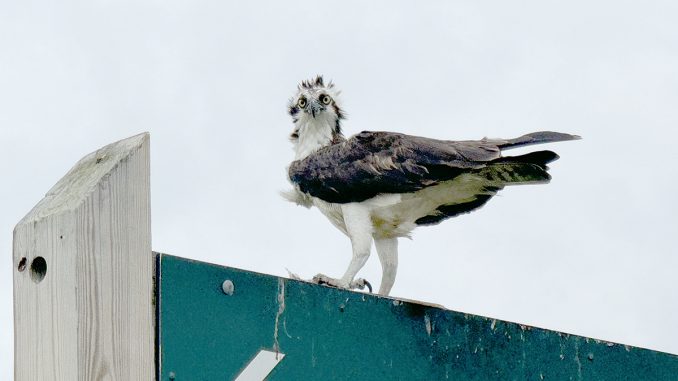
Fall migration season is underway, meaning thousands of birds will leave their summer homes in the Northeast and travel along the eastern seaboard to points south for the winter.
Most migrating birds tend to hug the coast of North America’s main landmass in the fall, but some birds, particularly raptors or birds of prey, follow the chain of coastal islands from Canada and New England.
“Being on the North Fork, we do get the migrants that just follow the chain of islands, you know, Fishers Island, Plum Island, that archipelago. We still get a lot of migrants coming through,” said Jennifer Murray, educator and naturalist at Turtleback Environmental Education Center of Peconic.
This can be a dangerous time for these birds. The weather is unsettled and there is the constant threat of predators, coupled with light pollution and other man-made threats.
One of the biggest ways people can help migrating birds is by supporting and observing the national Audubon Society’s Lights Out initiative. This involves turning off outdoor lights between 11 p.m. and 6 a.m., when most birds are migrating. Other actions include using downward-facing exterior lights.
“Most of the birds are flying at night, and they get disoriented by the lights and can go off-course or get confused … and fly into buildings. So, reducing light pollution in general is key,” Ms. Murray said.
Placing bird decals on windows is another helpful intervention that prevents bird strikes. Birds cannot perceive glass, and reflections on the surface make it look like more trees or sky. “The birds see the reflection of vegetation in the windows, and a lot of times, they’re looking to almost behind them for a predator,” Ms. Murray said. “So, they’re relying on that peripheral vision. They’re not looking straight into the window. This is a major issue throughout the country, where thousands of birds can die in a single night.”
Specific to this time of year, when homeowners begin to put up Halloween decor, there are some common decorations that can pose a danger to birds and other wildlife. Birds and bats frequently become tangled in fake spiderwebs. Strobing lights can have an even greater disorienting effect than standard outdoor lighting.
There are also general changes to landscape practices that homeowners can take to be better stewards of their surroundings. Planting native plants that provide food for migrating hummingbirds and other pollinators makes a big difference in their caloric intake. Using non-poison rodent mitigation products helps support owls and other predators, who often die from secondary poisoning. Keeping cats inside also allows birds to thrive without added pressure. “It does have an impact when you explain to somebody what you’re doing. And you know, people might be resistant to it at first, but then a lot of the neighbors really enjoy seeing the wildlife, and then they start to participate as well. So, it does have a ripple effect right in your neighborhood, creating these larger pockets, these larger pathways, for nature,” said Ms. Murray.
Migration forecasts and maps for birds are available online.

